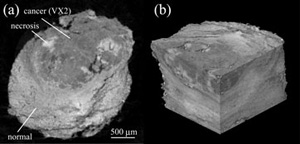
Fig.1: The configuratuin of the X-ray Talbot interferometer and the CT image obtained when applied to a round plastic object with a diameter of 1mm.

In 1836, William Henry Fox Talbot, known as The Father of Modern Photography, discovered the fact that the optical amplitude distribution of one- or two-dimensionally periodic object replicate periodically along the propagation direction, when it is illuminated by a coherent wave. This phenomenon is known as the Talbot effect, and is still of great importance even today for both researchers and engineers. The configuration of a Talbot interferometer is shown in Fig.1. The two gratings are arranged in line along the X-ray axis with a certain distance, which is called the Talbot distance. In 2003, the X-ray Talbot interferometer with hard X-ray was first realized in our lab. It can be applied to the X-ray phase imaging with high sensitivity to observe various objects, including objects with weak absorption such as biological soft tissues or soft matters.
(fig. 2Fpart of a mouse tail, fig. belowFpart of a rabbit liverj

While the imaging method involving a crystal interferometer needs a sychrotron radiation X-ray, the Talbot interferometer works with a compact X-ray source, and therefore is expected for the practical use in the future. The gratings for a Talbot interferometer need very high aspect ratio,and we are on a collaborative project with Dr. Hattori's team, the University of Hyogo, for the making of the gratings that would meet the above condition. The Talbot interferometer can be discribed as a phase-sensitive image detector, and it means that it can be combined with various X-ray imaging techniques, such as the X-ray microscopy with a nano-scale resolution for example, which we are trying to realize as well.